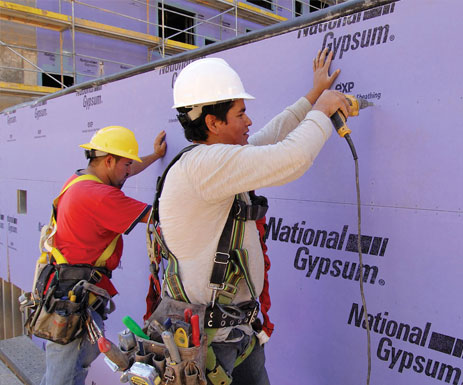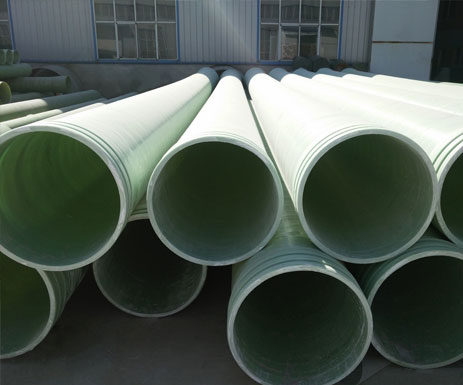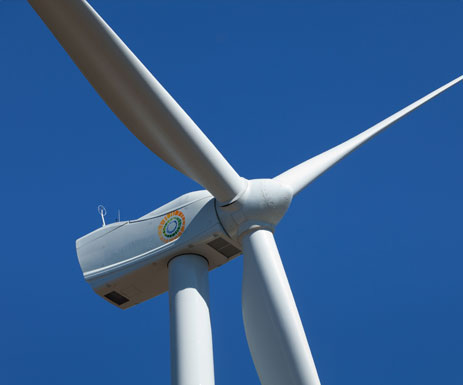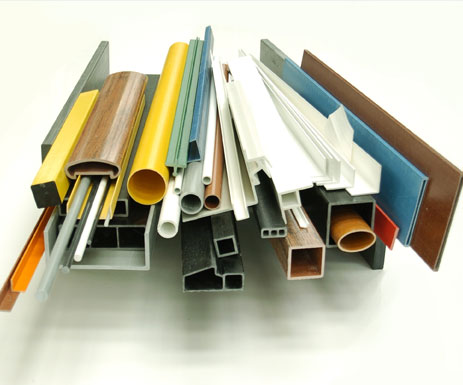Why FRP Products Have Shrinkage and Deformation (part1)
 Jul 03, 2020|
Jul 03, 2020| View:439
View:439No matter what the product is, or whatever process is used, as long as it is a FRP product, you will find an unavoidable problem, that is, the shrinkage and deformation of the product.
When designing clearly, the size data is very accurate, and the process seems to be no problem, but the products that come out have contracted and deformed. Which part of the problem has occurred?
The root cause of the shrinkage of the product lies in the shrinkage of the resin, and why the resin shrinks, there are 3 main reasons.
① When the resin is cured, the chemical bond is broken, and the reaction crosslinks. The distance between the original molecules becomes the long bond distance, and the occupied volume becomes smaller.
② The molecules of the resin are disorderly distributed in the viscous flow state, and gradually change to an ordered distribution during the curing process. The molecules are tightly packed, so the occupied volume becomes smaller.
③ During the curing process, the exothermic heat of the reaction raises the temperature of the system. After reaching equilibrium, the temperature begins to decrease, and the thermal motion of the molecular chain gradually weakens, and the free volume decreases.
The shrinkage of the resin will cause the product to have internal stress, which is the root of the product deformation. The root cause of shrinkage and deformation of the product was found all at once, which was caused by the shrinkage of the resin. The next step is to find a way to solve the problem from the root cause.
1. Resin
Since resin is the root cause, can we improve the shrinkage of the resin itself? The answer is yes. The resins of different systems have different shrinkage rates due to different reaction mechanisms. For example, the volume shrinkage of common unsaturated polyester resins is generally 7-10%, while the volume shrinkage of epoxy resins is generally 2% about. It can be seen that when different resins are selected, there is a very large gap in shrinkage.
The same is the unsaturated polyester resin, the use of different raw materials in the synthesis stage can also fundamentally control the shrinkage rate. The volume shrinkage of some new UP resins can be controlled at 2-3% or even lower.
But in many cases, due to many reasons such as process and cost, we do not have much space when choosing resin. When the shrinkage rate of the resin is too large, then we need to look at the following suggestions.
2. Filler
The problem of resin shrinkage is that after curing, the space volume becomes larger, so you can reduce the shrinkage by adding some fillers.
Commonly used inorganic fillers are calcium carbonate, talc, aluminum hydroxide, etc. These fillers generally do not participate in chemical reactions and are inert materials. By reducing the resin content per unit volume and the way to occupy the pit, to reduce the shrinkage rate.
In addition, the shrinkage rate can be controlled by adding a low shrinkage agent (LPA), whose main components are some thermoplastic resins, elastomers or combined polymers. In addition to occupying the pit, the thermoplastic resin will also expand to a certain extent during the heat release of the resin, which can offset the volume shrinkage caused by the curing process of the thermosetting resin, thereby reducing the shrinkage rate more effectively.
Polystyrene (PS) commonly used in the production of SMC sheets is a thermoplastic resin.
Although the addition of fillers or LPA can effectively reduce the shrinkage of the resin, it will also reduce the mechanical properties of the product to a certain extent, which is not a perfect solution.
3. Process
When the raw materials cannot be changed, we can also control the shrinkage from the process.
Controlling the curing speed is critical. If the curing speed is too fast and the reaction is violent, the exothermic peak is often too high. If the temperature of the system changes too much, it is easy to cause heat shrinkage. Therefore, under the premise of ensuring production efficiency, the curing speed must be well controlled, and should not be too fast.
Control the resin content. The root cause of shrinkage is mainly resin, so controlling the resin content can also control the shrinkage rate. Especially in the hand lay-up process, workers often increase the amount of resin in order to catch up with the work, which leads to excessive resin content of the product, which is more prone to shrinkage and deformation problems.
Control the number of single layer. This is mainly reflected in the hand lay-up process. There is a very obvious difference in the shrinkage rate between a single layer of paste and five layers of single paste. The more the number of layers, the more concentrated the exothermic reaction, which is more likely to cause heat shrinkage. .
Post curing treatment. By curing after heating, the curing degree of the product is improved to prevent the monomer from continuing to react after demolding, causing shrinkage and deformation. This link is ignored in many normal temperature processes (hand lay-up, vacuum introduction, RTM), and in order to improve production efficiency, it is often demolded too fast, so it is easy to cause the product to be placed for a period of time, and the phenomenon of deformation will occur before it is out of the warehouse.
4. Laminate design
This is mainly for the pavement design of reinforced materials and sandwich materials.
Choosing different reinforcing materials has a certain influence on the content and distribution of the resin, so this problem needs to be considered when designing the layup.
Whether the product chooses the sandwich material will also affect the resin content. For 20mm products, one solution is pure glass fiber reinforcement, and the other design solution is to use 10mm sandwich foam + 10mm skin, and the shrinkage rate of the two is also different.
Of course, all choices must be made based on the requirements of the product. It is necessary to take into account performance, cost and other factors in order to make a better plan.
5. Local strengthening
Shrinkage will cause internal stress, and the presence of internal stress will cause the product to deform, which will affect its use. In order to suppress this deformation, some local reinforcement can be done on the product to counteract the internal stress and prevent the deformation of the product.
In the glass fiber reinforced plastic mold, the steel structure is basically used for post-reinforcement. When the mold is subjected to external force or internal stress, it can prevent deformation. In products, the use of ribs to ensure product rigidity.
In the current technical means, it is unrealistic to completely eliminate the shrinkage of the resin itself. Shrinkage is only a big or small problem. There are so-called "zero shrinkage" resins on the market, which are not true zero shrinkage, but only control the shrinkage rate to a few thousandths.




















View More(Total0)Comment lists